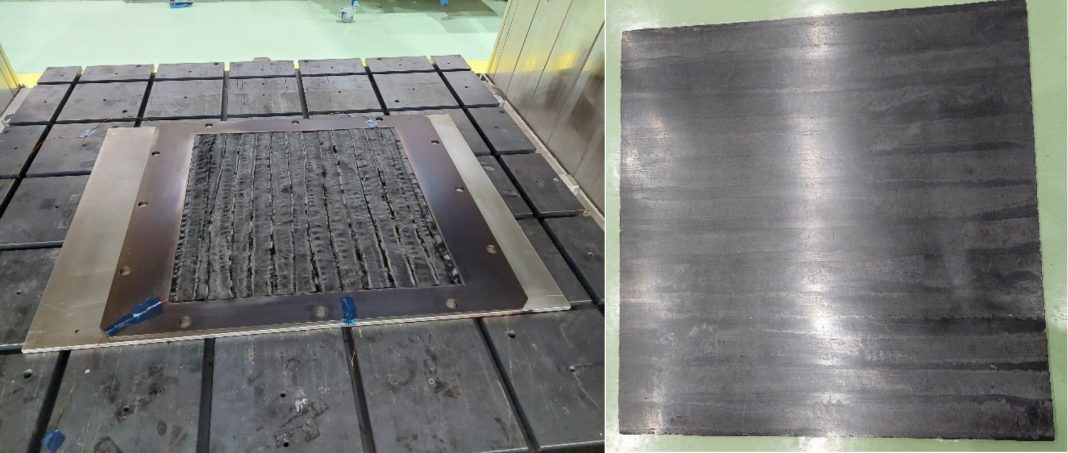To address waste generated during production, a processing route for uncurde material is developed in MC4. Multilayer fresh prepreg scrap is processed to obtain new intermediate products that can be used to manufacture new parts
Developing dedicated valorisation processes for each composite scrap is essential to exploit their potential and avoid decreasing the remaining performances during processing or increasing costs.
In the case of multilayer fresh prepreg scrap, it is typical of the aeronautical field in which automated lay-up technologies such as automatic fibre placement or automated tape laying create a flat stack with a tailored laminate. This laminate is then cut by ultrasonic equipment. Despite being high-quality, the leftovers remaining are discarded because of the complexity of finding a suitable application for these cutoffs and the complicated geometry of laminate parts. It must also be considered that this kind of scrap is often designed to keep a predominant orientation, presenting a higher amount of fibre.
The processing route developed by FIDAMC is based on extracting strips oriented with the predominant direction from these cutoffs to exploit the longest continuous fibres. Then, these multilayer strips are calendered in heated equipment to reduce and homogenise the thickness. The resulting strips present a thickness of around 1/4 – 1/5 of the original stacking thickness, enabling the possibility of using it to manufacture new parts.
Processing parameters must be tuned to allow correct fibres sliding, avoiding distortion between them. For this reason, parameters such as roller temperature, calendering speed, preheating or thickness reduction per calendering step are evaluated. Resulting strips processed under incorrect parameters are inconsistent and irregular to be used in new applications. Low calendering temperature leads to high viscosity resin and will create higher forces, causing fibre distortion, while high temperature leads to the strip sticking to the rollers. Regarding processing speed, fibres do not slide enough if feeding speed is too fast. Finally, strips will be distorted if the thickness reduction relation is too aggressive per calendering step. For these reasons, it is essential to find harmonious processing parameters to get homogeneous strips.
The resulting strips can be used to create a new stacking, considering that the material presents, as happens with composite materials, anisotropic performances because of the predominant orientation. Depending on the new application, especially if it presents complex geometries, resin adding could be needed to ensure cavity filling to avoid dry areas or porosities. As a processing technique for the strip, it is recommended to use hot-press curing to improve thickness control and surface finishing. However, other techniques could also be used, such as bag curing in or out of the autoclave.


This work is licensed under Creative Commons Attribution-NonCommercial-NoDerivatives 4.0 International.


